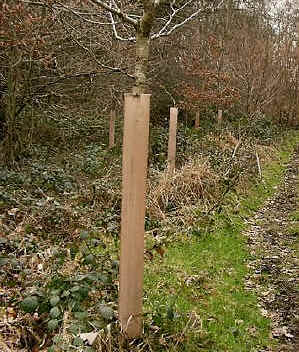 |
When planting for timber, the
young trees should be spaced in regular lines to ensure ease of future management (left). The best time for planting is generally considered to be when the plants are dormant. This can either be in the autumn/early winter or in late winter and early spring.
|
| . | |
 |
Young
trees will often need some measure of protection from being eaten by animals such as
rabbits and deer during establishment. This may either take the form of fencing, or in the
case of broadleaf trees, individual tree protection via guards of varying kinds. Some tree
species may not do well inside particular types of guards. Financial considerations will
also affect the choice between fencing or individual protection. Larger plantings may be
more economic to fence, whereas small numbers of trees may be better individually
protected. Costs of both can be high and it may be necessary to decide whether losses due
to animal damage warrant the costs of protection. Whips will usually need to be staked for support until the root system is sufficiently established to withstand wind. The stakes should be positioned on the opposite side of the prevailing wind. The stakes may also act as supports for tree guards. If individual guards are being used for protection, ideally the stakes should not extend beyond the top of the guard. Unless they are degradable, protective tubes will need to be removed once the trees are big enough to be less affected by grazing animals and before the tubes start to limit the tree growth. |
| . | |
|
Grants are available for tree planting, primarily from the Forestry Commission (Woodland Grant Scheme), but also from several other sources. Click here for more information. |
